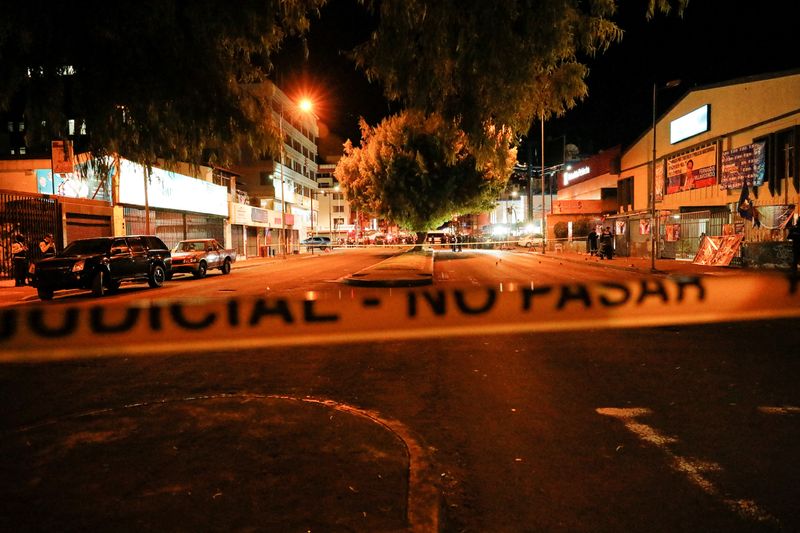(Reuters) – Ecuador was reeling on Thursday from the slaying of presidential candidate Fernando Villavicencio the night before, less than two weeks before elections were to take place.
The killing of Villavicencio, a vocal critic of corruption and drug crime that have beset Ecuador, underlines a deteriorating security situation in much of South America.
A combination of chronically weak economic growth, volatile politics, the COVID-19 pandemic and the growing reach of cocaine trafficking gangs has destabilized swathes of the continent.
WHAT HAS HAPPENED TO SECURITY IN ECUADOR?
Security in Ecuador has been worsening since the pandemic. From late 2020, violence erupted in many of the country’s prisons, with hundreds of inmates killed in jail riots.
Gangs operating inside Ecuador’s prisons have taken advantage of the state’s weak control to expand their power, threatening inmates’ lives, according to human rights groups and prisoners’ families.
Outside prisons, murders have exploded. Since 2016, Ecuador’s homicide rate has soared by almost 500% to an estimated 22 murders per 100,000 people in 2022, global risk intelligence company Verisk Maplecroft said in a note.
Guyaquil, considered Ecuador’s most dangerous city, registered 1,390 violent deaths in the first half of this year, nearly as many as it tallied in all of 2022, and close to half of the 3,500 cases registered nationally, police data showed.
WHY HAS THE VIOLENCE EXPLODED?
Conservative President Guillermo Lasso, who called early presidential elections in a bid to avoid impeachment, has repeatedly blamed the violence, including in prisons, on drug trafficking gangs.
The government on Thursday said Villavicencio’s killing was the work of foreign nationals in drug gangs.
Verisk Maplecroft similarly attributed an “unprecedented surge in brutal criminality” to growing “ trans-national drug-trafficking organizations and violent street gangs.”
Ecuador, the world’s top banana exporter, has traditionally escaped the violence that has long engulfed its northern neighbor, Colombia, the planet’s No. 1 producer of coca, the chief ingredient in cocaine.
With less attention from law enforcement, drug gangs have moved into Ecuador, experts said, often disguising vast loads of cocaine in shipments of bananas bound for Europe, where demand for the white powder is booming.
Ecuador is not the only South American nation to feel the impact. Paraguay, a key logistical hub for the global cocaine trade, has been scarred by high-profile cases of drug violence, and traditionally peaceful nations like Chile and Uruguay are also affected.
WHAT HAS BEEN DONE TO TACKLE THE PROBLEM?
Lasso has declared frequent states of emergency to ramp up security, which include military patrols on the streets and nightly curfews.
In April, Lasso authorized the civilian use of guns to fight rising insecurity. Ecuadoreans have headed to gun ranges to improve their skills in a bid to protect themselves.
IS THERE A PRECEDENT FOR POLITICAL VIOLENCE IN LATIN AMERICA?
Yes. Villavicencio’s murder recalled the 1984 assassination of Mexican presidential candidate Luis Donaldo Colosio and the 1989 killing of Colombia’s Liberal party candidate Luis Carlos Galan, the Verisk Maplecroft analysts said.
It also follows an assassination attempt against prominent Argentine politician Cristina Fernandez De Kirchner last year, as well as the stabbing and attempted murder of former Brazilian President Jair Bolsonaro in 2018, among others
(Reporting by Oliver Griffin; Editing by Cynthia Osterman)
